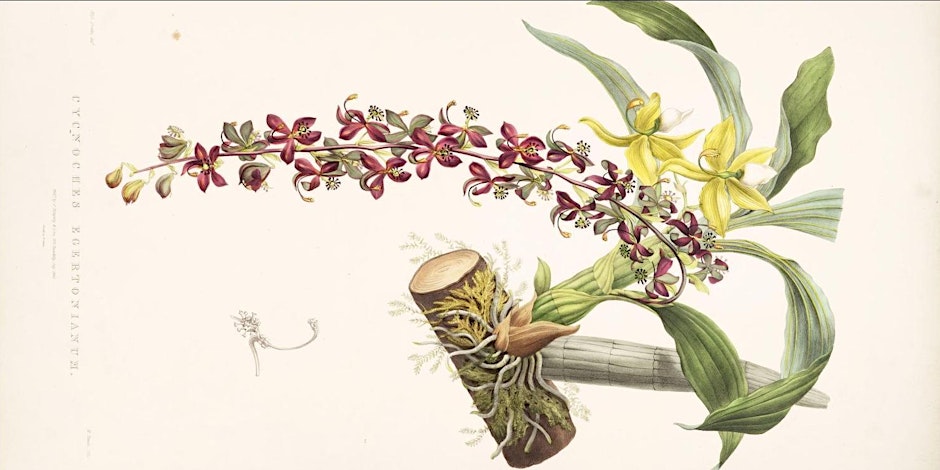The desire to possess new, rare and thus expensive plants has been a feature of garden-making since it began and continues to be so; as recently as February 2022 bulbs of Galanthus plicatus ‘Golden Tears’ were changing hands for £1,850 each. But at least this obsession didn’t bankrupt a nation! This Gardens Trust mini-series tells the story of the mania that developed around three of the most sought-after plants: tulips, rhododendrons and orchids. Each lecture will delve into how, and when these the plants arrived and what happened when they did, explaining along the way just what it was about them that caused such a furor – and a hole in the pocket.
This ticket (register HERE) is for this February 25 individual session and costs £8, and you may purchase tickets for other individual sessions, or you may purchase a ticket for the entire course of 3 sessions at a cost of £21 via the link here. (Gardens Trust members £6 or £15.75). Ticket sales close 4 hours before the talk.
Attendees will be sent a Zoom link 2 days prior to the start of the talk, and again a few hours before the talk. A link to the recorded session (available for 2 weeks) will be sent shortly afterwards.
This craze began in London in 1731 with a single plant of Bletia purpurea sent to plant collecting nut Peter Collinson from Providence Island, the Bahamas. But it was not until the nineteenth century that silly money was being spent and then only because glasshouse technology had evolved. Requiring collecting in regions challenging to travel, difficult to transport long distances by sea, tricky to cultivate and even more so to breed, orchids were the most expensive plant of that time. An extensive collection was the ultimate gardening statement of conspicuous consumption, but they were also very addictive and a number of aficionados bankrupted themselves through collecting. Still today there is a black market while, legally, specimens can cost tens of thousands.
Dr Toby Musgrave FSA FLS is a garden and plants historian, horticulturist and author. His books have covered a wide range of subjects from head gardeners to heritage fruit and vegetables, plant hunters to paradise gardens, and a biography of Sir Joseph Banks. He lives in Denmark where he gardens one of the historic de Runde Haver and when not gardening, teaching or writing he works as a submersible pilot. Image: S. Drake, Cycnoches egertonianum, detail, from James Bateman, The Orchidaceae of Mexico and Guatemala (1842), Wikimedia Commons, public domain

